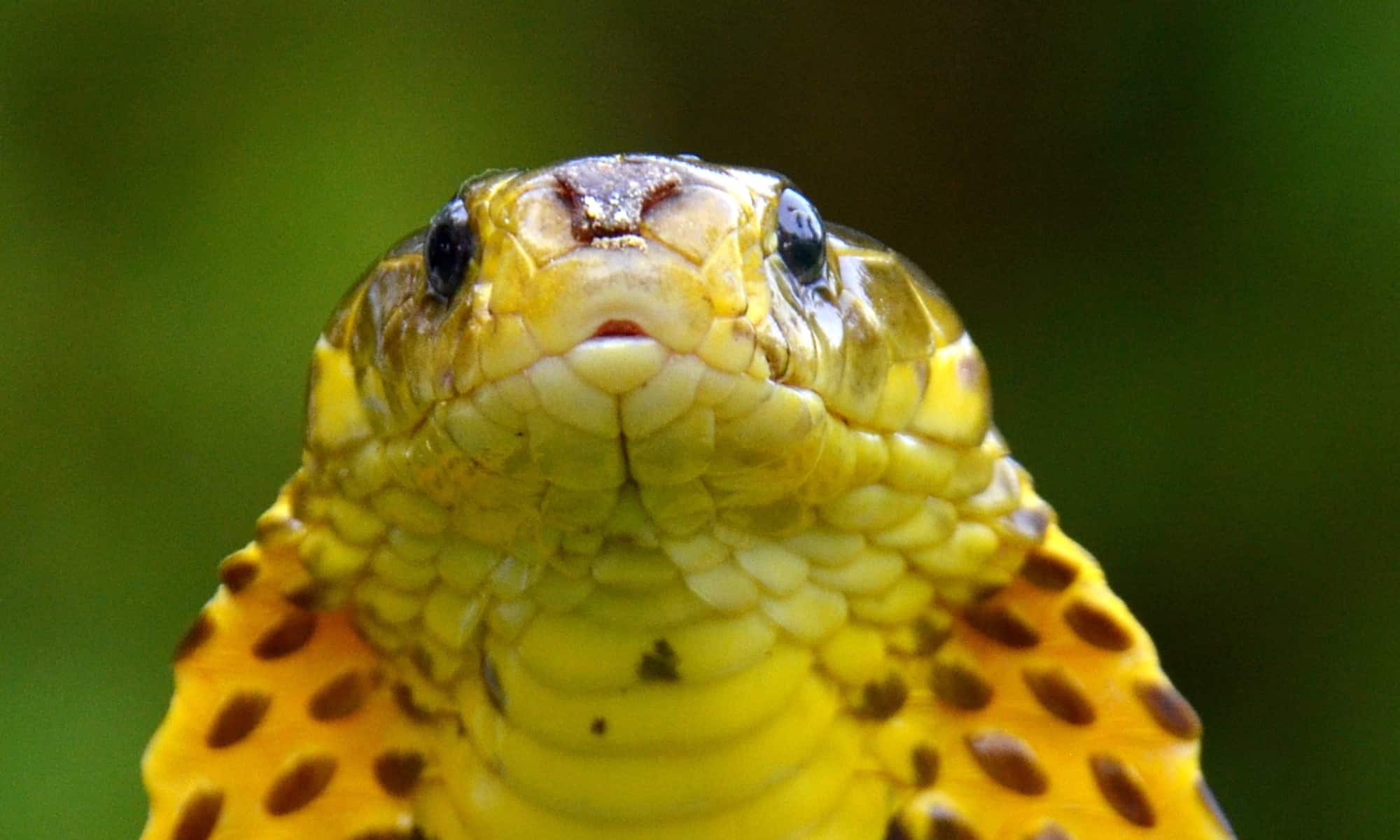
The Philippine cobra, scientifically known as Naja philippinensis, is a fascinating and iconic animal found in the Southeast Asian archipelago. Renowned for its deadly venom and distinctive hood, the Philippine cobra has captured the attention of both scientists and wildlife enthusiasts alike. In this article, we will uncover 19 extraordinary facts about this intriguing serpent, shedding light on its habitat, physical characteristics, behavior, and unique adaptations. From its potent neurotoxic venom to its ability to “spit” venom at its enemies, the Philippine cobra is truly an extraordinary creature. So, sit back and delve into the captivating world of the Philippine cobra as we unravel the mysteries surrounding this remarkable species.
Key Takeaways:
- The Philippine cobra is a deadly snake with unique markings, fast-acting venom, and a crucial role in controlling rodent populations to maintain the ecosystem’s balance.
- Conservation efforts are vital to protect the Philippine cobra and its habitat, as its venom is used in research and antivenom development, showcasing its importance in both science and nature.
A Deadly Venom
The Philippine cobra, scientifically known as Naja philippinensis, is a highly venomous snake endemic to the Philippines. Its venom is one of the most potent among all cobra species.
Unique Markings
One of the distinguishing features of the Philippine cobra is its unique hood marking. It has two symmetrical ocelli, or false eyespots, on the back of its hood, which can be expanded when threatened.
Length and Size
An adult Philippine cobra can reach an average length of 4-5 feet (1.2-1.5 meters). However, some individuals have been recorded to grow up to 7 feet (2.1 meters) long.
Diet
The Philippine cobra mainly preys on rodents, lizards, and other small vertebrates. Its venom is specifically adapted to paralyze and incapacitate its prey.
Venomous Bite
The venom of the Philippine cobra contains neurotoxins, which affect the central nervous system. A bite from this snake can cause severe pain, blurred vision, respiratory failure, and even death if left untreated.
Fast-Acting Venom
The neurotoxic venom of the Philippine cobra acts quickly on its victims. It can cause paralysis within minutes, affecting the respiratory muscles and, ultimately, leading to suffocation.
Habitat
The Philippine cobra can be found in various habitats, including forests, grasslands, agricultural areas, and even urban environments. It is highly adaptable and is often encountered near human settlements.
Threatened Species
The Philippine cobra is listed as a threatened species due to habitat loss and human persecution. Deforestation and agricultural expansion pose significant threats to its population.
Reproduction
The Philippine cobra is oviparous, meaning it lays eggs. A female can lay up to 20 eggs at a time. The eggs are incubated for approximately 60 days before hatching.
Defensive Behavior
When threatened, the Philippine cobra raises its front body off the ground, expands its hood, and emits a hissing sound. This stance is a warning to potential predators and aggressors.
Ecological Role
Despite its reputation as a dangerous snake, the Philippine cobra plays an important role in the ecosystem. By controlling the population of rodents, it helps to maintain a balance in the food chain.
Cultural Significance
The Philippine cobra holds cultural significance in the Philippines. It is often featured in folklore, traditional dances, and art, symbolizing strength, power, and resilience.
Night Hunter
The Philippine cobra is primarily a nocturnal hunter, preferring to search for prey during the cooler hours of the night. Its excellent vision helps it navigate in low-light conditions.
Territorial Behavior
Male Philippine cobras are known to exhibit territorial behavior, defending their preferred areas from other males. They engage in combat rituals, which involve intertwining their bodies and attempting to push each other down.
Conservation Efforts
Conservation organizations and local communities are actively involved in efforts to protect the Philippine cobra and its habitat. Education and awareness programs are crucial in ensuring its survival.
Venom Extraction
Due to the potency of its venom, the Philippine cobra has been the subject of venom extraction programs. Its venom is used in scientific research, the development of antivenom, and even in potential medicinal applications.
Lifespan
The average lifespan of a Philippine cobra in the wild is around 10-15 years. However, some individuals in captivity have been known to live up to 20 years or more.
Adaptability
The Philippine cobra has demonstrated remarkable adaptability to changing environments. It can survive in both natural habitats and human-altered landscapes, showcasing its resilience as a species.
Importance in Ecosystem
As an apex predator, the Philippine cobra plays a crucial role in maintaining the ecological balance. Its presence helps to control rodent populations, which can otherwise cause damage to crops and spread diseases.
Conclusion
In conclusion, the Philippine cobra is undeniably one of the most intriguing snakes in the animal kingdom. With its potent venom, impressive defensive display, and unique characteristics, this species commands both respect and fascination. The 19 extraordinary facts highlighted in this article have shed light on just how remarkable the Philippine cobra truly is.From its ability to spit venom accurately at a distance to its adaptation to various habitats, the Philippine cobra has evolved to thrive in its environment. Understanding these facts not only increases our knowledge about this species but also emphasizes the importance of conserving and protecting its natural habitat.Whether you’re fascinated by snakes or simply interested in learning more about the incredible diversity of wildlife, the Philippine cobra is a species that captivates with its remarkable traits. Exploring more about these extraordinary creatures will undoubtedly continue to unveil even more astonishing facts about the Philippine cobra and the world of reptiles as a whole.
FAQs
Q: Are Philippine cobras dangerous?
A: Yes, Philippine cobras are highly venomous and can be extremely dangerous. Their venom contains potent neurotoxins, capable of causing respiratory paralysis or even death if not treated immediately.
Q: How long do Philippine cobras grow?
A: Philippine cobras typically grow to lengths ranging from 1.5 to 2 meters (4.9 to 6.6 feet). However, some specimens can reach up to 2.5 meters (8.2 feet) in length.
Q: Where can Philippine cobras be found?
A: Philippine cobras are endemic to the Philippines and can be found on various islands throughout the archipelago, including Luzon, Mindanao, and Samar.
Q: What is the diet of Philippine cobras?
A: Philippine cobras primarily feed on small mammals, birds, lizards, and frogs. They are skilled hunters, using their venom to immobilize and digest their prey.
Q: Are Philippine cobras aggressive?
A: While Philippine cobras are generally shy and try to avoid confrontations, they can become aggressive if they feel threatened. They display their hood and may strike if they perceive a potential danger.
Q: What is the lifespan of a Philippine cobra?
A: The lifespan of a Philippine cobra in the wild is estimated to be around 15-20 years. However, in captivity, they can live even longer, reaching up to 25 years.
Was this page helpful?
Our commitment to delivering trustworthy and engaging content is at the heart of what we do. Each fact on our site is contributed by real users like you, bringing a wealth of diverse insights and information. To ensure the highest standards of accuracy and reliability, our dedicated editors meticulously review each submission. This process guarantees that the facts we share are not only fascinating but also credible. Trust in our commitment to quality and authenticity as you explore and learn with us.


